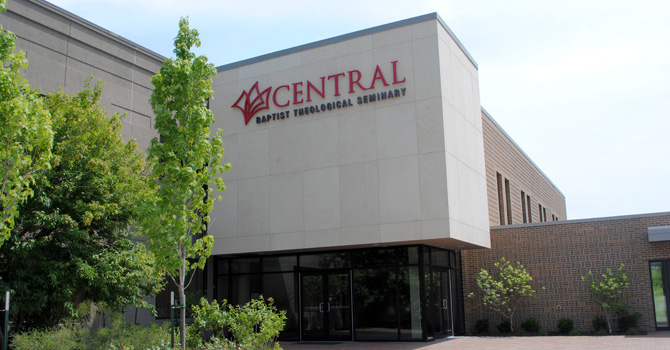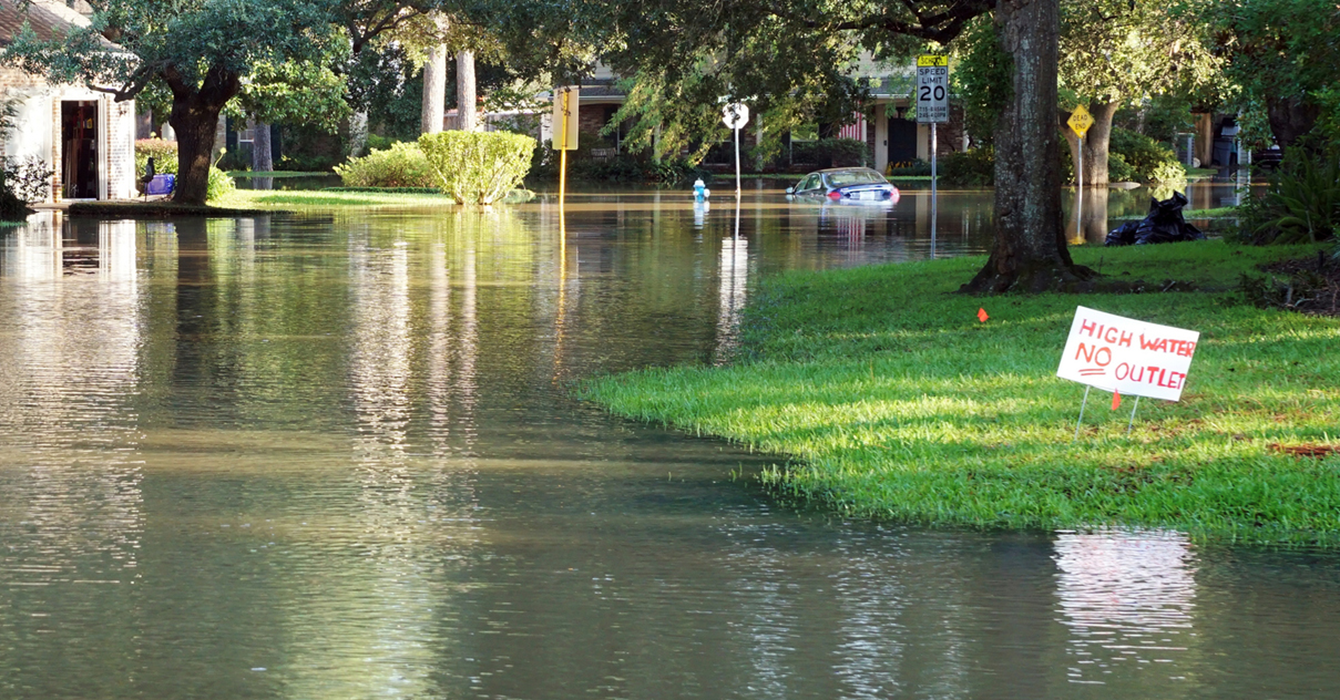Update: Molly T. Marshall resigned as president of Central Baptist Seminary in March 2020.
With declining enrollment, significant financial problems and a decaying campus, Central Baptist Theological Seminary in Kansas City, Kansas, was on the verge of collapse when Molly T. Marshall was named its president in 2004.
“I inherited something pretty precarious, and I knew I had to do some hard things,” she said.
The hardest, she said, were cutting faculty and staff and moving to a smaller campus.
“I cut a third of the faculty and half the staff, which is a horrible thing in a small, tightly knit community,” she said. “But I had to think institutionally rather than about personal relationships. That comes with the job of being president.”
Today, Central Baptist is one of the fastest growing seminaries in the United States, with a host of new programs and initiatives. The turnaround wasn’t easy, requiring not only a lot of “heavy lifting” but also creativity and a willingness to take risks.
“I believed we had a mission yet to go, and I believed that we could find creative ways to deliver it,” Marshall said. “I began to see that creativity is one of the most important leadership qualities for a seminary president -- a willingness to try some things, not be risk-averse, and challenge a board to move nimbly.”
 Marshall came to Central Baptist in 1995 as a professor of theology and spiritual formation and was elected as the school’s president in 2004. Before that, from 1984 to 1994, she was a professor of theology at the Southern Baptist Theological Seminary, Louisville, Kentucky, where she received her M.Div. and Ph.D.
Marshall came to Central Baptist in 1995 as a professor of theology and spiritual formation and was elected as the school’s president in 2004. Before that, from 1984 to 1994, she was a professor of theology at the Southern Baptist Theological Seminary, Louisville, Kentucky, where she received her M.Div. and Ph.D.
She spoke recently with Faith & Leadership. The following is an edited transcript.
Q: Central Baptist wasn’t one of the fastest growing seminaries when you became president in 2004. Give us an overview of Central, then and now .
When I came to Central, it was a much smaller school, with significant financial challenges, deferred maintenance challenges and a decaying property in the urban core of Kansas City.
It was very different after being at Louisville, where the money and the students just flowed in.
I’m Benedictine at heart, and I gave myself to a vow of stability -- meaning, “I’m going to see if I can strengthen this school, give my best, not be on my way somewhere else but plant my life here.”
Central was bleeding enrollment. At one point, it was down to about 76 students. My predecessor abruptly resigned in the fall of 2003, having exhausted himself trying to renew the school.
In the spring of 2004, the school began a presidential search, and I began a period of discernment. I had been happy in the classroom, but I had a sense of calling to the role. So I let my name go forward, and in November I was unanimously elected as the 10th president.
I inherited something pretty precarious, and I knew I had to do some hard things. Of the two hardest, the first was to lead the board to declare “financial exigency” -- academic language for bankruptcy -- which allows you to put all contracts on the table.
I cut a third of the faculty and half the staff, which is a horrible thing in a small, tightly knit community. But I had to think institutionally rather than about personal relationships. That comes with the job of being president.
That was my first board meeting.
The second board meeting, the fall of 2005, I asked the board for permission to consider selling the campus and moving. We had $16 million in deferred maintenance, and there was no way we could lift that burden. We needed to move.
In 2006, we bought a new campus, a six-year-old building that had belonged to a church, and moved. In 2011, we dedicated a new library and a new chapel, and now we’re beginning to build again.
Q: How did you go about this process strategically? You didn’t just make this up as you went along.
Sometimes it felt like it.
I have an excellent executive vice president who works alongside me. He knows facilities and properties and finance, and I learned how to raise money and how to tell the seminary’s story in a compelling way.
I believed we had a mission yet to go, and I believed that we could find creative ways to deliver it. I began to see that creativity is one of the most important leadership qualities for a seminary president -- a willingness to try some things, not be risk-averse, and challenge a board to move nimbly.
A near-death experience helps bring clarity. I argued that if we stayed at the downtown campus we would most likely die but if we moved we had a chance to renew our mission.
At the same time, I was thinking about how to deliver our courses in different ways. We began some extension sites, and little by little we’ve done some distance education online.
I also began to explore some new markets. One was a Korean studies program; another was a global partnership with a school in Myanmar, and then working with resettled refugees from Myanmar. We were very attentive to multicultural issues and saw immigrant populations as a sector that was not being sufficiently served.
We did a number of things that allowed us to cut personnel costs, including outsourcing some functions. We had to go through some other reductions, and there was some attrition; some folks did not have the stomach for some of the radical moves that I had to make.
But the faculty that stayed has been stalwart; they understood that theological education is changing and that we had to be much more nimble to the life-work balance of our students.
We changed the class schedule, with more weekend intensives and block courses during the week.
For academic purists, which I once was, this is hard. You question whether or not you’re doing the same quality of leadership development in theological education. But I am convinced that a school must model the kind of adaptive, flexible, creative leadership that it hopes to instill in those it is preparing for ministry.
Q: What are the most important trends shaping theological education and the church?
The Pew [Religious Landscape Study] report gives us some indication of what is happening in terms of the decline in membership, affiliation and all the rest. One of the impacts of that upon theological education is the need to reframe our thinking about vocation.
[We need] a more permeable boundary between ecclesial community and community development, a much more multicultural identity, a kind of theological hospitality that meets persons’ deeper spiritual hunger without presuming they have the catechetical formation one would have received by long-term involvement in church. So seminary becomes a place for both conservation of the intellectual heritage of the faith and its exploration and development.
Cultural assimilation is becoming much more important for theological schools. The fact that immigrant communities are forcing what some sociologists call a “de-Europeanization of American Christianity” means that theological education must reflect that in its instructional force and in its welcome to those communities. A theological school has to get over itself in some ways, to make room for disparate notions.
Q: Speak more about the nature of risk taking and its role in leadership. It must have been risky for you even to go to Central.
Yeah. I was a tree climber as a child. Maybe that will tell you something. One time I went so high that the fire department had to come and get me down out of a pin oak in our front yard. I wanted to climb real high so I could see real high.
The sense that I felt a calling to ministry, at 14, meant I was open to risk, open to see where the spirit of God might beckon me. I did some unusual things as a 19- to 22-year-old. I was a youth minister in Baltimore a couple of summers.
They thought I was a country cornflake from Oklahoma. But I was willing to try things, even if I wasn’t sure I could pull them off. And people would say, “Well, why not?”
When I finished college, I had planned to go to Southwestern Seminary in Fort Worth, but I discovered how they treated women. There was a women’s dorm called Barnard Hall, and the men referred to it as “the barnyard,” and I thought, “That is absolutely insulting.”
This is early ’70s, OK? I’m not going to put up with that.
So I worked in Comanche, Texas, for a year doing youth and community ministries. And during that time, I figured I’d go to Louisville. So I went there and enrolled in the School of Theology.
They didn’t want me there, because women are supposed to be in Christian Ed, and I basically talked my way into being a master of divinity student. I spent three very good, enlightening years there, and after that was a youth minister in Little Rock. Then I became persuaded that it would not get better for women in the churches until it got better at the seminaries, in terms of educating women for all forms of ministry.
I calculated that the first woman that Southern hired would probably be someone whom they groomed internally, and my calculus was correct. So in the spring of 1984, after finishing my Ph.D., I was the first woman hired in the School of Theology. I spent 11 and a half difficult years there. I was widely pilloried as the Southern Baptist brouhaha grew more intense, until finally they had the votes and the will and a new president to get rid of me.
I faced some decisions. I had an opportunity to teach at a Catholic college. I had an opportunity to go to one of the new, emerging seminaries that were happening in the beginning of the CBF [Cooperative Baptist Fellowship] movement.
But I decided it made more sense to help strengthen an old school rather than be a part of the multiplication of new schools. Central was founded in 1901, the first Baptist seminary west of the Mississippi, and they courted me, and I said I would come. And I have stayed; I’m in my 21st year.
It is absolutely essential to be entrepreneurial. It requires courage to be on a mission. I’ll sound like a Blues Brother, but to be on a mission from God requires great faith. It requires great industry, and by that I mean just relentless pursuit of what you believe God is beckoning an institution to become.
Q: How did you convince the board to sell the old campus and move? People don’t like getting rid of buildings.
No, they don’t.
We had board members who said, “We fell in love on this campus; we got married in this chapel,” and pastors in the area who said, “You don’t care about the city; you’re abandoning the urban core; you don’t care about black people.”
Well, we’re more multicultural than we’ve ever been by making the move. Before, we had armed robberies on campus. It was a hard place to be. It just made sense, if we were to renew the mission, to make this move.
I did a strategic communications plan. I had open phone lines for four days straight. I sent out a set of questions and answers -- “Can the seminary continue its mission if it moves from its historic location?” I wanted every alum and board member to have the opportunity to call and express their perception.
A couple of older alums gave me some positive feedback, saying, “I’m still on fire for Central Seminary after all these years; I wouldn’t trade anything for what it taught me. It has to go on.”
I leveraged those remarks and began to use them as I talked with the board and as we publicized what we needed to do.
For a couple of years, people thought we were going under, but I just kept making the visits, doing the PR, being in the churches, going to the judicatory meetings and talking about renewal.
And then I began to talk about resurrection. Resurrection means it comes in a new form, and that was something I had to articulate to faculty, students and other stakeholders.
The role of the president is to be resilient and to radiate hope. And I have been pretty unyielding in that.
I knew we were going to make it in the spring of 2007, when we got a transformative gift, the largest gift the seminary had ever received. It was from a church in St. Louis that was closing and selling its property. We got 40 percent of the proceeds, which was $2.4 million.
I had been visiting them for a couple of years. I began to cultivate relationships there and to talk about how they could sow an enduring legacy.
So we got a significant gift from the sale of their property, and that put us at a place of more solvency than we had been.
I began to breathe a little bit at that point, but it has been heavy lifting, actually, the whole time.
Q: What was the scariest moment?
When we declared financial exigency.
I had to inform the staff and faculty, one by one, what we were going to do. That was painful. I lost friends over it, valued colleagues. Some folks still won’t speak to me.
But we weren’t going to make it had we not done something radical. Our accrediting body had warned us for years about our finances. When we declared financial exigency, they realized that we were taking their warnings seriously.
It was a good decision. You have to weigh whether or not you’re going to do that, but it’s a hard calculus.
To use Jim Collins’ language, it took a while to get the flywheel going. It was just circling and circling. I was talking and being attentive and trying to tend a culture of lament, which was what we had for about three years after that many people were released. It was a culture of lament, and I just had to listen and try to tend it.
Q: What are your thoughts on the state of women in ministry and the role of mentoring?
I don’t believe the church will be really healthy until it equally values the roles of both men and women, and I’ve been saying that for 40 years. It’s still hard in many traditions for women to have equal access to leadership positions.
There are two women who head Baptist seminaries in our hemisphere; one is in Puerto Rico and I’m the other. There used to be a woman in Singapore, and my little joke was, “That’s all Baptists can stand, one per hemisphere.”
Many women, particularly women of color, have been so marginalized in their congregations that there needs to be intentional mentoring and coaching to help them claim their rightful place.
That’s a part of what we’re doing in the Women’s Leadership Initiative at Central. The initiative is a cohort of M.Div. students who have a specialized curriculum in addition to the core curriculum. They’re being taught by significant women, as well as men, about certain entrepreneurial and leadership issues so they can understand the metrics of creating something.
It meets at Scarritt Bennett Center in Nashville, Tennessee, and is underwritten by a donor from Central, a woman who wants to see other women succeed.
Mentoring is essential for pastors, particularly for women. It’s only in recent years that women have been far enough along the trail to be able to offer reflection on their experience to women coming behind. When I was coming through, there just weren’t many women. They were rare in my tribe, Baptists in theological education, and certainly as pastors.






